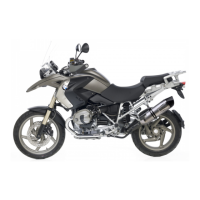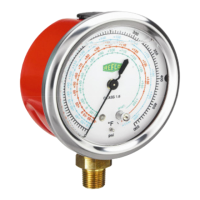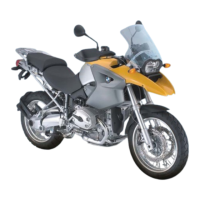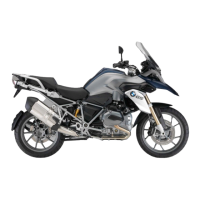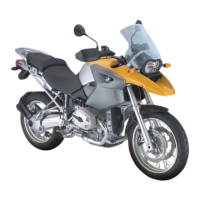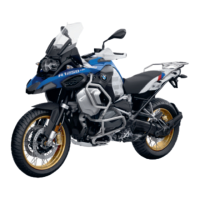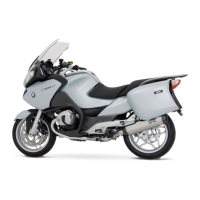can occur, ABS intervenes
and adapts braking pressure
to the maximum transferrable
braking force, so the wheels
continue to turn and direc-
tional stability is maintained
irrespective of the condition of
the road surface.
What are the effects of
surface irregularities?
Humps and surface irregu-
larities can cause the wheels
to lose contact temporarily
with the road surface; if this
happens the braking force
that can be transmitted to
the road can drop to zero.
If the brakes are applied un-
der these circumstances the
ABS has to reduce braking
force to ensure that direc-
tional stability is maintained
when the wheels regain con-
tact with the road surface.
At this instant the BMW Mo-
torrad Integral ABS must as-
sume an extremely low coef-
ficient of friction, so that the
wheels will continue to rotate
under all imaginable circum-
stances, because this is the
precondition for ensuring dir-
ectional stability. As soon as
is registers the actual circum-
stances, the system reacts
instantly and adjusts braking
force accordingly to achieve
optimum braking.
What feedback does the
rider receive from the
BMW Motorrad Integral
ABS?
If the ABS system has to re-
duce braking force on ac-
count of the circumstances
described above, vibration is
perceptible through the hand-
brake lever.
When the handbrake lever is
pulled, brake pressure is also
built up at the rear wheel by
the integral function. If the
brake pedal is depressed
after the handbrake lever is
pulled, the brake pressure
built up beforehand is per-
ceptible as counter-pressure
sooner than is the case when
the brake pedal is depressed
either before or at the same
time as the brake lever is
pulled.
How can stopping
distance be minimised?
Each time the brakes are
applied, a load distribution
shift takes place with the
load shifting forward from
the rear to the front wheel.
The sharper the motorcycle
decelerates, the more load
is shifted to the front wheel.
The higher the wheel load, the
more braking force can be
5
83
z
Riding
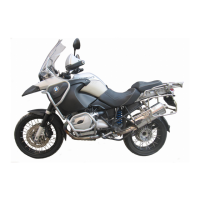
